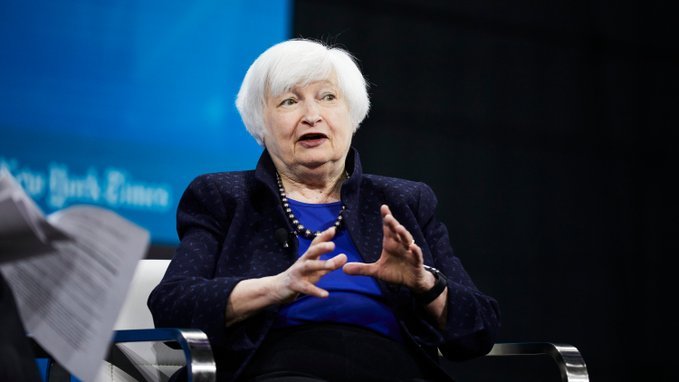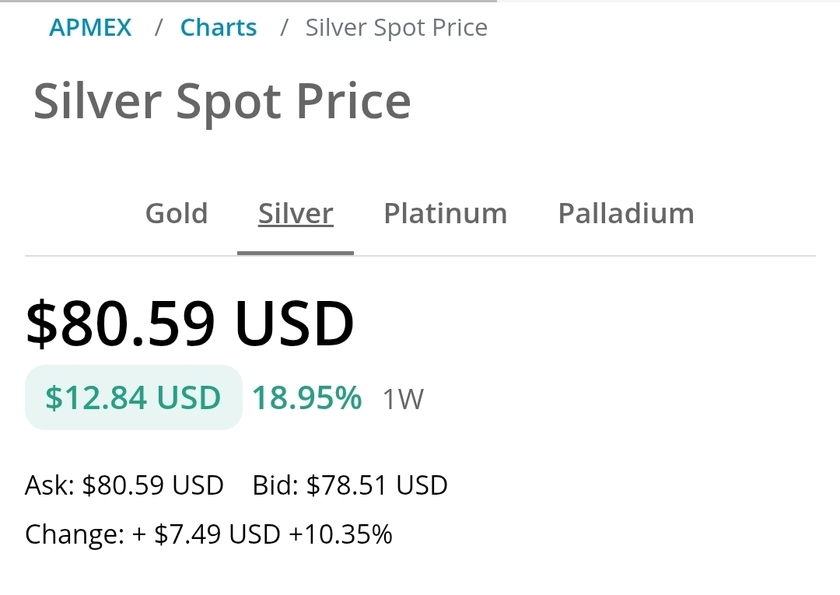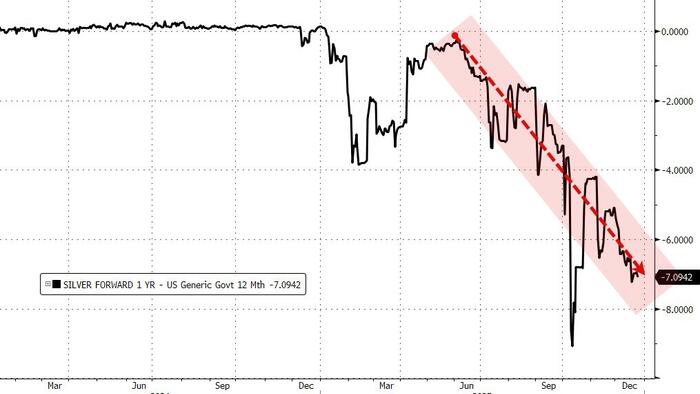WASHINGTON — Treasury Secretary Janet L. Yellen warned on Friday that she would have to begin employing “extraordinary measures” on Thursday to continue paying the nation’s bills if lawmakers did not act to raise the statutory debt limit and that her powers to delay a default could be exhausted by early June.
Ms. Yellen’s letter to Congress was the first sign that resistance by House Republicans to lifting the borrowing cap could put the U.S. economy at risk and signals the beginning of an intense fight in Washington this year over spending and deficits.
“Failure to meet the government’s obligations would cause irreparable harm to the U.S. economy, the livelihoods of all Americans and global financial stability,” Ms. Yellen wrote.
Ms. Yellen said on Friday that considerable uncertainty surrounded how long she could use measures to delay a default. She said she would begin suspending new investments in the Civil Service Retirement and Disability Fund and the Postal Service Retiree Health Benefits Fund and suspending reinvestment of the Government Securities Investment Fund of the Federal Employees Retirement System Thrift Savings Plan this month to avoid breaching the debt limit.
The letter is the beginning of what is expected to be a protracted and potentially damaging economic fight. Republicans, who assumed control of the House last week, have insisted that any increase to the debt limit be accompanied by significant spending curbs, most likely including cuts to both the military and domestic issues.
Speaker Kevin McCarthy has cited reducing the national debt — which topped $31 trillion last year and has increased during both Republican and Democratic administrations, including about a 40 percent increase under former President Donald J. Trump — as a central focus of his party’s agenda.
“The American people are the ones that’s demanding the cut in spending,” Representative Jason Smith, a Missouri Republican and the chairman of the powerful House Ways and Means Committee, said Friday on Fox News. “We have to have fiscal reforms moving forward. We cannot just give an unlimited credit card.”
Understand the U.S. Debt Ceiling
Card 1 of 4
What is the debt ceiling? The debt ceiling, also called the debt limit, is a cap on the total amount of money that the federal government is authorized to borrow via U.S. Treasury securities, such as bills and savings bonds, to fulfill its financial obligations. Because the United States runs budget deficits, it must borrow huge sums of money to pay its bills.
Why is there a limit on U.S. borrowing? According to the Constitution, Congress must authorize borrowing. The debt limit was instituted in the early 20th century so that the Treasury would not need to ask for permission each time it had to issue debt to pay bills.
What would happen if the debt limit was hit? Breaching the debt limit would lead to a first-ever default for the United States, creating financial chaos in the global economy. It would also force American officials to choose between continuing assistance like Social Security checks and paying interest on the country’s debt.
On Monday, House Republicans adopted new rules governing legislation that make it more difficult to raise the debt limit and strengthen Republicans’ ability to demand that any increase be accompanied by spending cuts. Senate Republicans have also insisted that increases to the debt limit should be tied to “structural spending reform.”
“It’s long past time for Washington to end the reckless spending of taxpayer dollars and start living within its means,” Senator Rick Scott, Republican of Florida, said in a statement on Friday. “I look forward to working with House Republicans so we can stop caving to the Democrats, finally end Biden’s raging inflation crisis and bring fiscal sanity back to Washington.”
Some conservative economists have encouraged the tactics. Kevin A. Hassett, a chairman of the White House Council of Economic Advisers under Mr. Trump, warned in a National Review column this week that the total national debt could reach nearly double the size of the annual economy 30 years from now if Congress did not stop spending growth.
“Brinkmanship now is the only thing that can save us from catastrophe,” Mr. Hassett wrote.
Top Democrats said on Friday that Republicans were threatening to damage an already fragile economy by risking a default.
“Once again, Republicans are demanding cuts to Medicare, Medicaid and Social Security, and if they don’t get what they want, they’re willing to tank the American economy, destroy a strong job market and jack up interest rates and inflation,” said Senator Ron Wyden of Oregon, the chairman of the Senate Finance Committee.
President Biden has said that he will refuse to negotiate over the debt limit, and that Congress must vote to raise it with no strings attached.
Those positions increase the likelihood of a debt limit breach, one that could result in the United States defaulting on its debt for the first time.
To avoid that, the White House is increasingly counting on a coalition of bipartisan support to bypass Republican leadership in the House and lift the debt limit.
That group includes the entire Democratic caucus in the House and Senate, plus a handful of Republicans needed to pass bills in both chambers. Such a coalition could employ a rare tactic in the House, called a discharge petition, to force a floor vote on raising the limit. But the move would take weeks or even months to produce a bill that Mr. Biden could sign into law, which could threaten default if lawmakers misjudge the date when Treasury can no longer pay the nation’s bills.
The closer the country gets to a potential default, the more damage the economy is likely to incur. Brinkmanship between congressional Republicans and President Barack Obama in 2011 resulted in higher borrowing costs for businesses and home buyers, along with plunges in stock markets and consumer confidence. An actual default could shock the economy into recession, as many government bills went unpaid, and saddle the nation with significantly higher borrowing costs for years to come.
After a protracted standoff in late 2021, Congress agreed to raise the borrowing cap to $31 trillion. Ms. Yellen has warned that breaching the debt limit and defaulting would do irreparable harm to the economy. She has dismissed suggestions and theories that the Treasury Department or the White House could lift the borrowing cap unilaterally as unrealistic and has called previously for the entire mechanism to be abolished.
“I respectfully urge Congress to act promptly to protect the full faith and credit of the United States,” Ms. Yellen wrote in her letter.
White House and Treasury officials have repeatedly made the case that raising the debt limit merely allows the federal government to spend money that Congress has already authorized and that doing so is not a sign of fiscal recklessness.
Karine Jean-Pierre, the White House press secretary, repeated on Friday that Mr. Biden would not negotiate with Republicans on the debt limit and expected Congress to raise it in a bipartisan vote.
“This should be done without conditions,” she said at an afternoon press briefing. “There is going to be no negotiation over it. This is something that must get done.”
Despite Ms. Yellen’s warning, many analysts and policymakers believe that a deal on the debt limit will ultimately be reached before it is too late.
“Today’s notification from the Treasury Department is notable, but not cause for panic,” said Shai Akabas, the director of economic policy at the Bipartisan Policy Center. “It is, however, time for both parties to get serious about negotiations.”
He added, “In this time of ongoing inflation and economic anxiety, the last thing the American people need is the tumult of a back-against-the-wall debt limit fight or, much worse, a default on our obligations.”
Wall Street analysts believe that House Republicans could ultimately save face and settle on a solution that would “suspend” the debt limit to a certain date without actually raising the borrowing cap to a specific level. This tactic, which was employed by former Speaker John A. Boehner in 2013 and 2014, would give the Treasury Department the leeway to keep the government running.
“At that time, unable to secure a specific dollar increase in the debt ceiling, Boehner came up with the idea of a ‘suspension’ of the debt ceiling through a specific date,” Henrietta Treyz, the director of economic policy at Veda Partners, an investment advisory firm, wrote in a note to clients this week. “This avoided Congress voting on a net budget increase authorization and instead ceded authority to the Treasury Department to do essentially whatever it needed to do through a specific date.”
Kristalina Georgieva, the managing director of the International Monetary Fund, told reporters on Thursday that she was hopeful that lawmakers would avoid a crisis over the debt limit this year.
“The discussions of debt limits are always quite intense,” Ms. Georgieva said. “History teaches us that in the end, a solution is being found.”




























